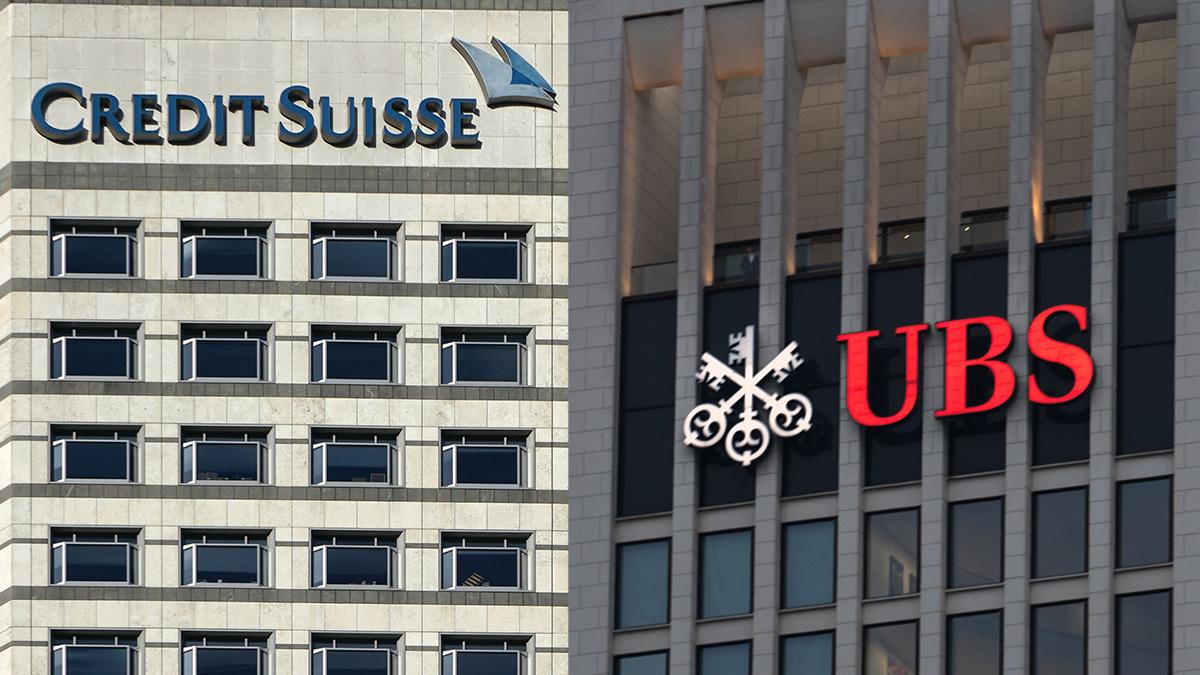Business
Credit Suisse- The 167-year-old lending institution succumbed to the financial turmoil
Published
1 year agoon

Credit Suisse Group AG was one of the stalwarts of the global financial system. Once deemed too big to fail, the Switzerland-based lender has now collapsed.
Designated as one of the world’s 30 systemically important banks, the 166-year-old lending institution succumbed to the financial turmoil triggered by the fall of Silicon Valley Bank in the US, which had itself become victim to the Fed’s tightening monetary policy and fall in its share value.
Before succumbing to the global financial crisis, Switzerland’s second-biggest bank survived without a bailout, unlike many of its peers. It had more than $1 trillion in assets, but years after, they dwindled to about US$580 billion—roughly half of UBS.
How did Credit Suisse go under the hammer?
In recent years, Credit Suisse has been in the news for all the wrong reasons. The Swiss banking giant has been dealing with multiple scandals that have affected its reputation and financial stability. One of the most significant crises the bank faced was the Archegos Capital Management meltdown. However, it wasn’t the only one.
The Archegos Capital Management Meltdown
In March 2021, Credit Suisse revealed that it had suffered significant losses due to the meltdown of Archegos Capital Management, a family office run by Bill Hwang. Archegos had taken on large positions in a few companies, using complex financial instruments called total return swaps. When these positions started to go against them, the banks that had provided the swaps, including Credit Suisse, were left with billions of dollars in losses.
Credit Suisse reported that its losses due to the Archegos meltdown were around $5 billion. This amount was more than the bank’s entire net profit for 2020, leading to a significant hit to its reputation and financial stability.
The Greensill Capital Collapse
Credit Suisse’s problems did not end with the Archegos meltdown. The bank was also heavily involved with Greensill Capital, a supply chain finance firm that collapsed in March 2021. Greensill’s business model involved providing short-term financing to companies to pay their suppliers. However, the firm ran into trouble when it was unable to obtain insurance for its loans.
Credit Suisse had invested around $10 billion in Greensill’s funds, making it one of the firm’s largest backers. When the company collapsed, Credit Suisse was left with billions of dollars in illiquid assets, which it struggled to sell. The bank suspended redemptions from its funds and faced regulatory investigations into its conduct.
Material Weaknesses
Credit Suisse had to postpone its annual report, which was scheduled to be published last week, after a last-minute call from the US Securities and Exchange Commission over revisions made to cash-flow statements for 2019 and 2020.
But after it released the report, the bank acknowledged “material weaknesses” in its internal controls.
Following fears of contagion from the collapse of two US banks, comments from Credit Suisse’s main shareholder on Wednesday that it would not invest more money in the bank sparked market panic.
The Swiss Bank’s Bailout
Credit Suisse’s most recent share price plunge began with the collapse of U.S.-based Silicon Valley Bank, but was compounded when the 167-year-old Swiss institution announced that it had found “material weaknesses” in its financial reporting procedures.
Confirmation from top investor the Saudi National Bank that it could not provide any more funding to Credit Suisse then provided the final blow, prompting the announcement of a loan of up to 50 billion Swiss francs ($54.2 billion) from the Swiss National Bank. By that point, Credit Suisse shares were down by around 98% from their all-time high in April 2007.
As Credit Suisse dealt with the fallout from these crises, it faced mounting pressure from its investors and regulators. There were concerns about the bank’s ability to weather the storm and avoid a full-blown financial crisis. In 2022, Credit Suisse reported a net loss of $7.8 billion, after posting a net loss of $1.8 billion a year before.
In this situation, UBS, Credit Suisse’s main rival, stepped in to offer assistance. UBS provided Credit Suisse with more than $3 billion via a credit line, which would give the bank some breathing room to address its financial challenges. The loan was reportedly made on favorable terms, indicating UBS’s confidence in Credit Suisse’s long-term prospects.
The bailout by UBS was a significant moment for the Swiss banking sector. It showed that the country’s banks were willing to support each other in times of crisis, which helped to stabilize the financial system. However, it also raised questions about the long-term viability of Credit Suisse and its ability to compete with its larger rival.
UBS-Credit Suisse Deal: A Bailout, A Merger or A Repeated slip-up of Swiss Banking
When UBS Group agreed to purchase Credit Suisse for close to $3.2 billion, as well as agreeing to absorb some of its losses, Swiss Finance Minister Karin Keller-Sutter was quick to point out that the deal was “not a bailout,” but rather the “best possible solution” given the challenging circumstances. The Swiss government was determined to avoid the stigma of bailing out a systemically significant bank on a worldwide scale after brokering the deal under pressure.
After what went down during the 2008 global financial crisis, admitting to a bank bailout would be equivalent to confessing that some banks are just too big to fail, and that taxpayers have an obligation to save private banks when faced with crises.
However, soon after the historic banking deal became public, some leading commentators were quick to label the UBS takeover of Credit Suisse as nothing but a bailout, an indication that some important lessons were not learned post-2008. “The phrase ‘bailout’ has become such an awful phrase that everybody is avoiding it. They’re going out of their way to say that it’s not a bailout, but then they can’t explain why money’s being put to work”, said Mohamed El-Erian, the chief economic advisor to Allianz and also the president of Queens’ College at Cambridge University, in a conversation with a media outlet.
As part of the agreement between UBS and the crisis-hit Credit Suisse, Swiss National Bank (SNB), Switzerland’s central bank, agreed to help UBS with loans worth $108 billion as liquidity assistance in order to prevent the takeover from having adverse impacts on the broader financial system. In addition to this, the Swiss authorities also agreed to ‘absorb’ some of the losses that UBS will have to incur from the deal.
As far as the official narrative goes, the deal between UBS and Credit Suisse is just a merger, a collaboration between two private companies that benefits both parties. It’s interesting to note that none of the two banks asked their shareholders for permission before accepting the bargain that the government negotiated.
In a statement issued by Credit Suisse, the disaster-struck lender said, “The SNB will grant Credit Suisse access to facilities that provide substantial additional liquidity. On March 19, 2023, Swiss Federal Department of Finance, the Swiss National Bank and FINMA asked Credit Suisse and UBS to enter into the merger agreement. Pursuant to the emergency ordinance which is being issued by the Swiss Federal Council, the merger can be implemented without approval of the shareholders.”
Lessons To Learn, Unlearn and Relearn
In the aftermath of the 2008 crisis, governments around the world introduced fresh regulatory measures in their banking system to ensure that a similar tragedy never takes place again. The financial world realised that in an increasingly globalised system, a slip-up in the banking sector of a single country can have vast repercussions in countries all over the world. One important lesson, that was supposedly learned, was that governments stepping in to help too big-to-fail private banks is not a favourable situation.
Yet, Switzerland finds itself there again, although it is not to be called a bailout program this time. The Alpine country, famous for its safe and secure banking system, simply helped broker a deal between its two largest banks. This helping measure happened to involve over $100 billion of public money and will subsequently create a merged entity out of two Global Systemically Important Banks (G-SIBs). This new entity will be bigger than just UBS, bigger than just Credit Suisse, and bigger than many too-big-to-fail banks.
You may like
-


Indian Government’s Crackdown on Social Media: A Threat to Free Speech
-


The Simpsons did it again! This time foreseeing Apple’s latest technological innovation – The Apple Vision Pro
-


Dilip Venkatraman was promoted to SVP and business head for Media and Entertainment at Tech Mahindra
-


Swati Bhattacharya steps down as FCB India CCO
-


Lodha Ventures onboards Mahesh Shah as President of Corporate Communications
-


Nippon India Mutual Fund names Kaiyomurz Daver as Chief Marketing Officer


